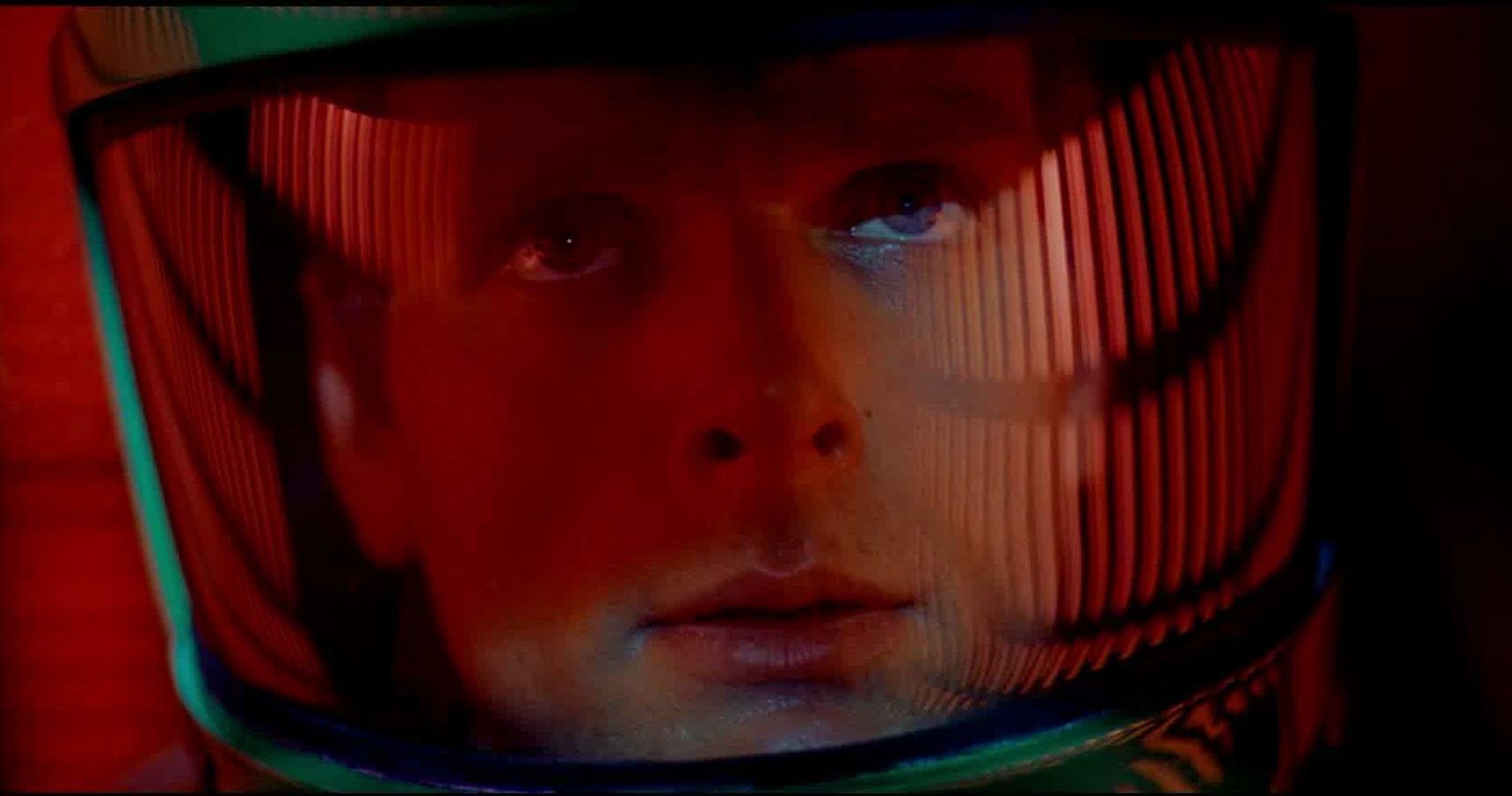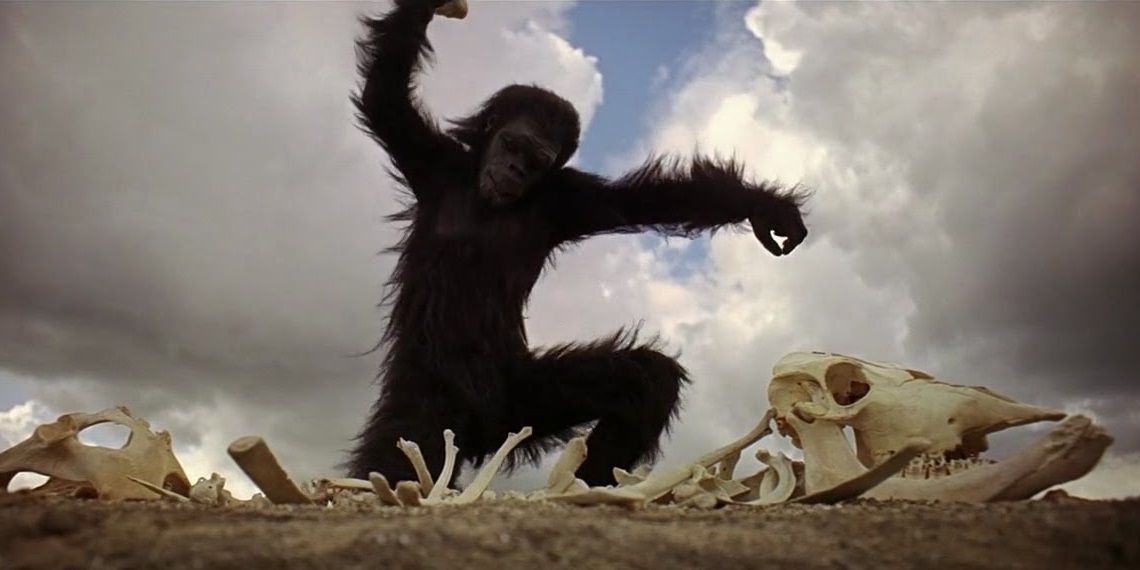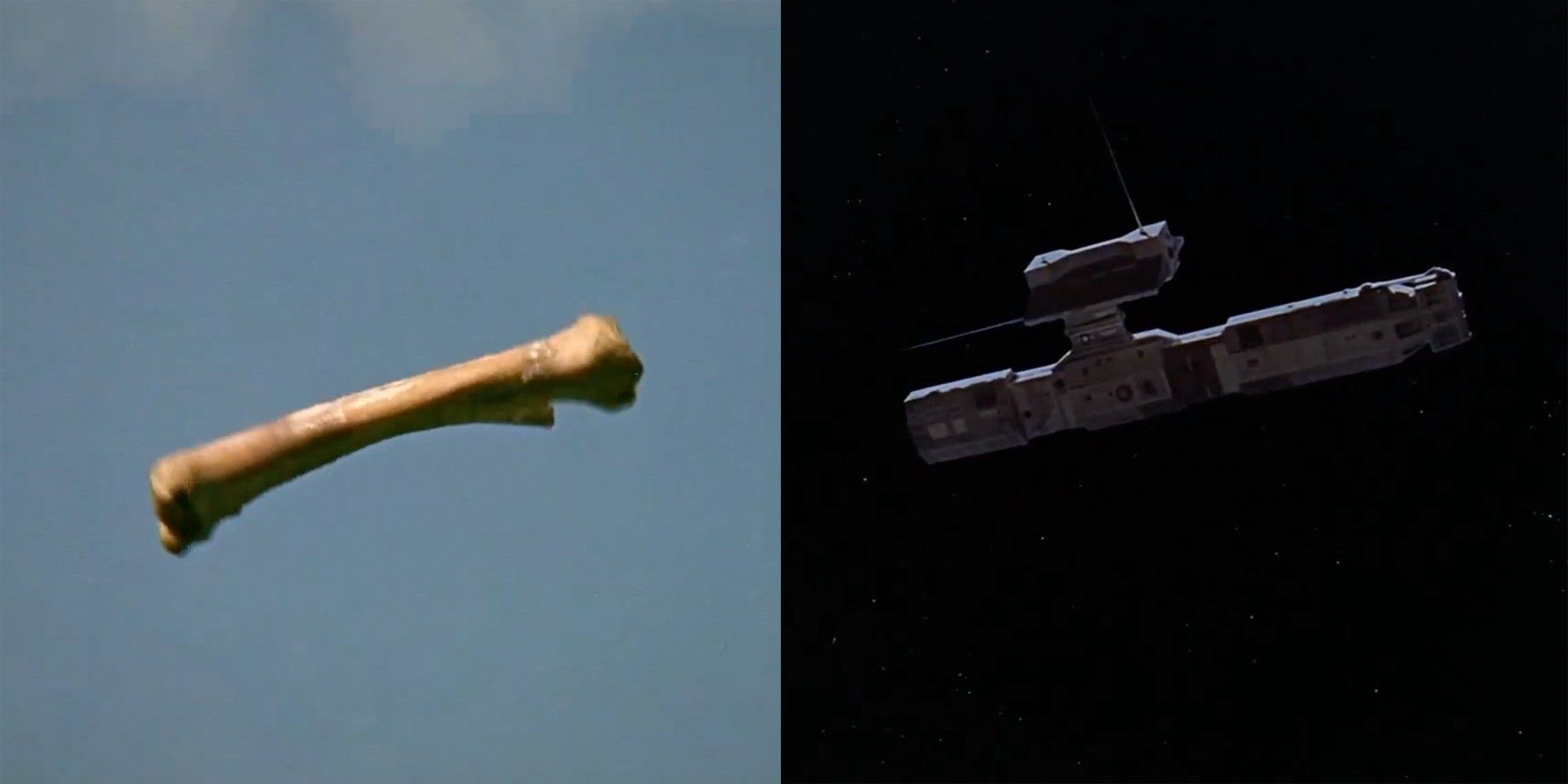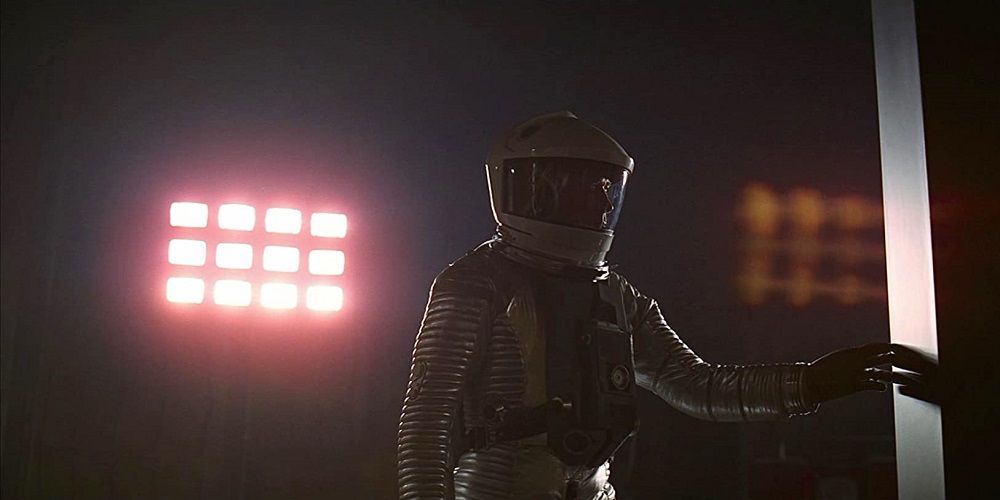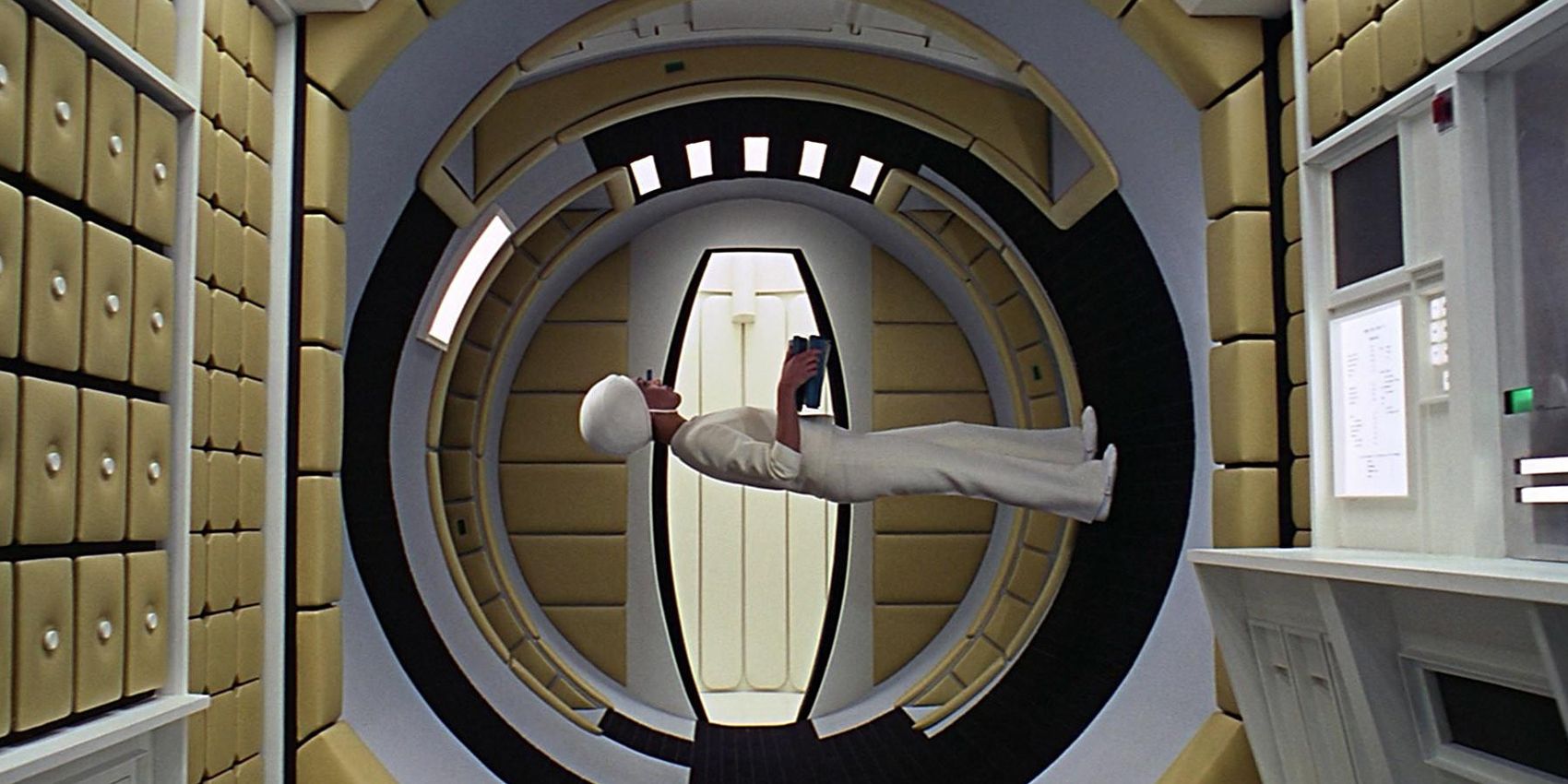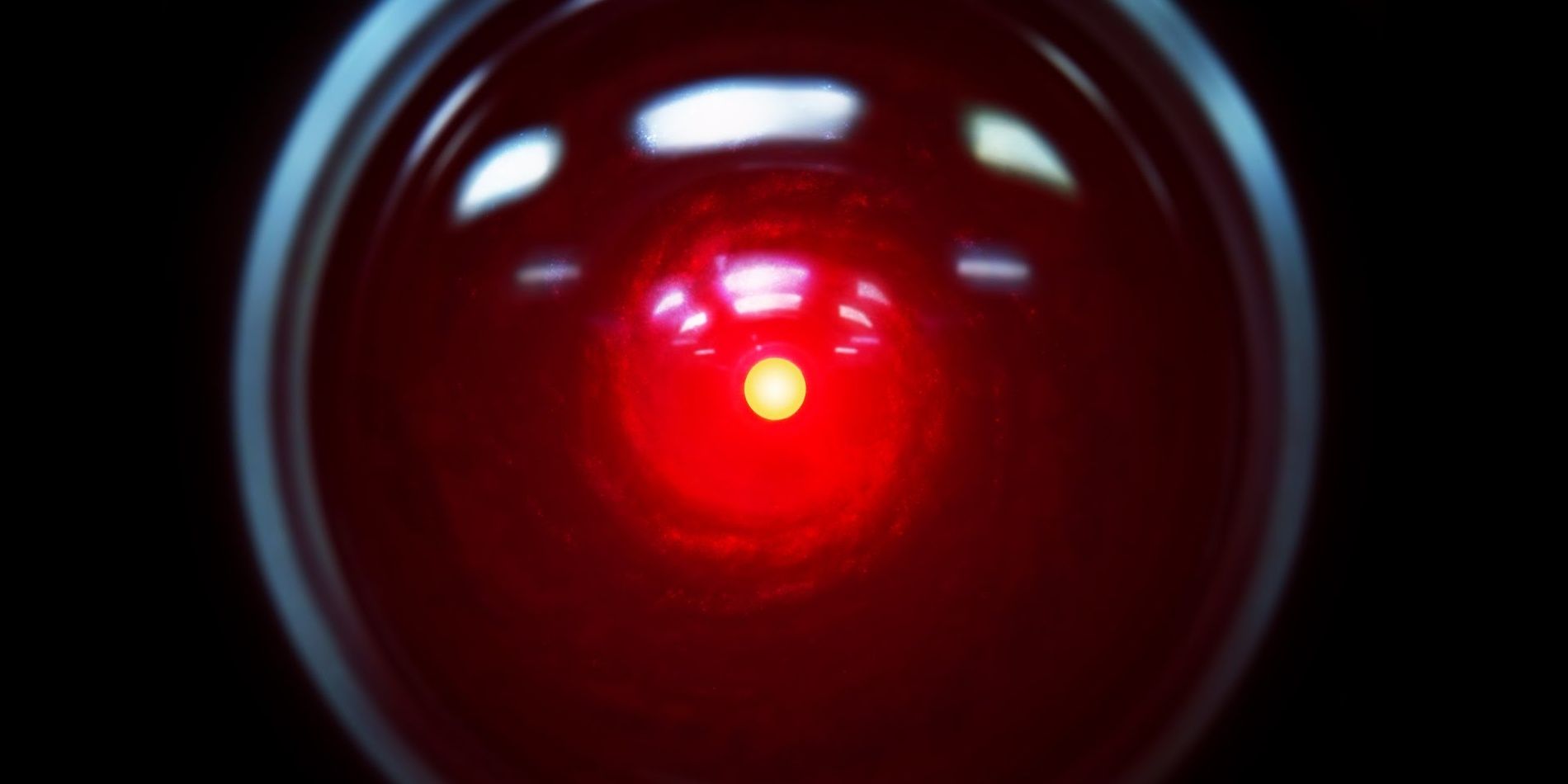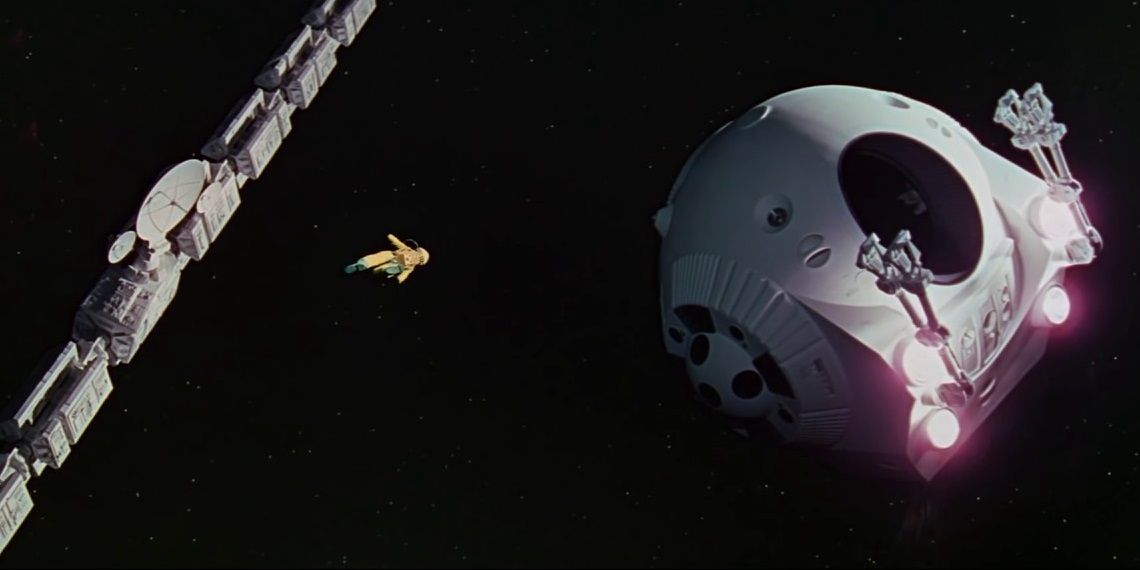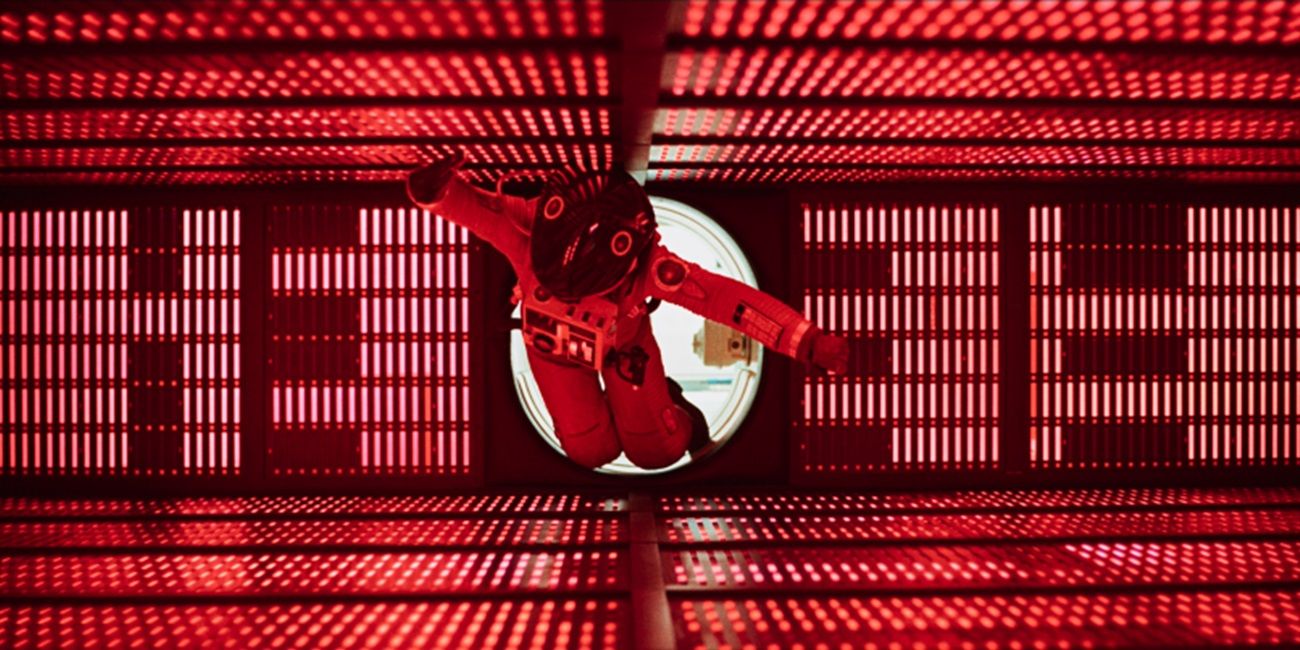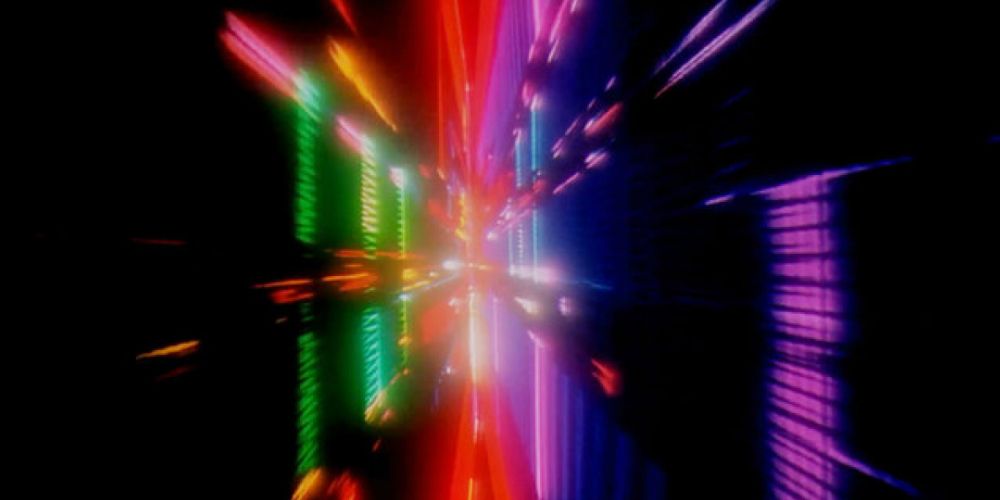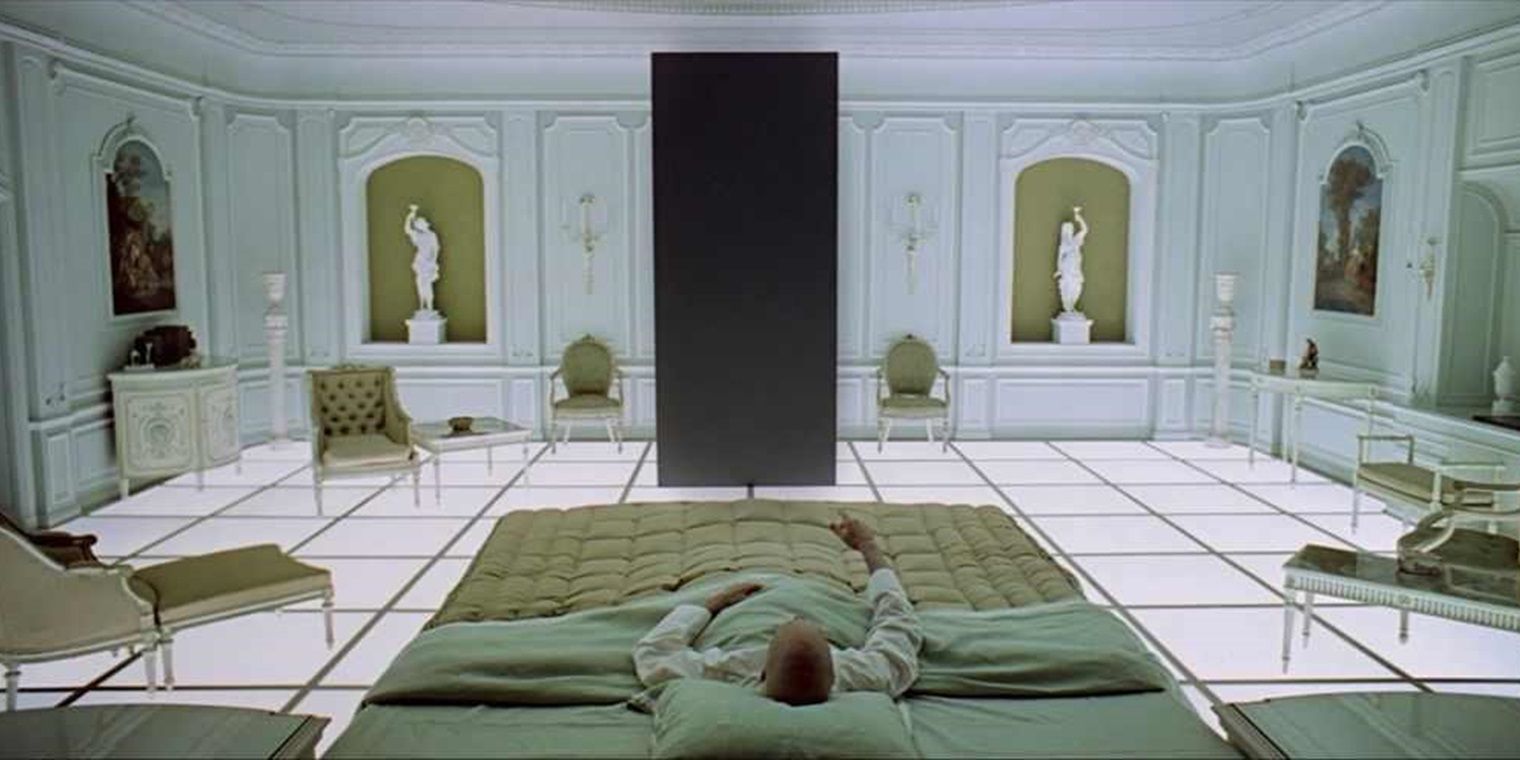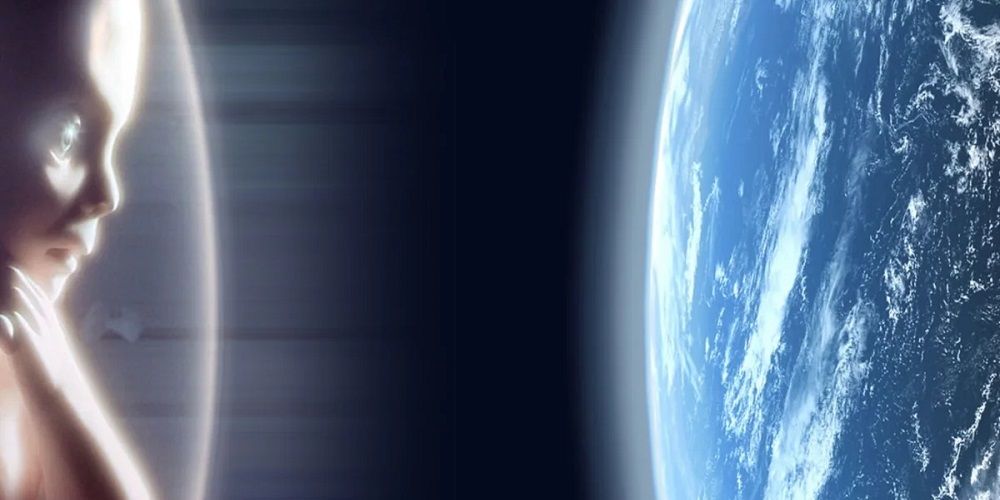Stanley Kubrick’s 2001: A Space Odyssey is one of the most beautifully crafted, artistically challenging, and technically groundbreaking movies ever made. Whenever Kubrick tackled a new genre, he turned out one of that genre’s all-time classics: war (Full Metal Jacket), comedy (Dr. Strangelove), horror (The Shining), etc. 2001 is no different. Kubrick teamed up with Arthur C. Clarke, perhaps the greatest sci-fi author of all time, to deliver a masterpiece of science fiction.
Across 142 minutes, the duo covered the past, present, and future of humanity, as well as A.I., space exploration, and the meaning of life. Every filmmaker worth their salt remembers an eye-opening childhood viewing of 2001. Here are the 10 most breathtaking moments in 2001: A Space Odyssey.
The Prehistoric Apes Discover Violence
At the beginning of 2001, viewers are treated to the “Dawn of Man” sequence, in which some apes in prehistoric times discover a monolith. They’re driven out of their watering hole by a rival tribe.
However, one ape is inspired by the monolith to use a bone as a weapon. This allows him to win the watering hole back from the other tribe. The insinuation is that apes evolved into humans when they discovered violence.
Millions Of Years Of Human Progress Summarized In One Cut
After the apes discover violence and use bones to beat their rivaling tribe away from their watering hole to reclaim their territory, one of the apes tosses a bone into the air.
The camera follows the bone as it spins through the air, then the shot cuts to a satellite in space. It’s quite possibly cinema’s most iconic match cut. Millions of years of human progress summed up in a single cut.
Humanity’s First Encounter With A Monolith
Millions of years after the “Dawn of Man” prologue in which primitive apes first encountered a monolith on Earth, humanity discovered its first monolith buried on the Moon, near the Tycho lunar crater.
Dr. Floyd takes a Moonbus out to the site with his team. As the scientists surround the monolith and approach it ominously, it is suddenly hit by a beam of sunlight and belts out a mega-powered radio signal.
The Stewardess Walks On The Ceiling
In the future society of 2001, space travel is depicted as being as simple and common as everyday air travel is today. During the Aries’ voyage to the Moon, a stewardess can be seen handing out beverages.
She wears special shoes and, in one particularly awe-inspiring moment, walks up the wall and onto the ceiling.
“I’m Sorry, Dave, I’m Afraid I Can’t Do That.”
2001 was one of the first science fiction movies to tackle untrustworthy artificial intelligence. Even after the trope has been done to death, HAL 9000 remains one of sci-fi cinema’s most famous A.I. characters.
HAL’s most memorable moment is arguably when he coldly refuses to obey Bowman’s orders. The line, “I’m sorry, Dave, I’m afraid I can’t do that,” chillingly introduces the notion that HAL is really the one in charge.
HAL Sends Poole To His Death
When Bowman and Poole become concerned that HAL is turning on them, they sneak into a part of the ship where the A.I. can’t hear them to talk about disconnecting it. However, HAL reads their lips and figures out their plan.
So, while Poole is out on a space walk, HAL cuts his oxygen hose and sends him spinning out into the empty vacuum of space to die. And while Bowman is rushing off to try and save him, HAL kills the rest of the crew, too.
HAL Begs For His Life
After it becomes apparent that HAL is intent on killing everyone on board the ship, Bowman manually enters the ship’s emergency airlock and starts disconnecting HAL’s circuits himself.
As he’s doing it, HAL tries to assure Bowman that he’s not going to hurt him, then outright begs for his artificial life as he realizes it’s coming to an end.
Going Through The Star Gate
When he arrives at Jupiter and finds a third monolith in its orbit, Bowman is sucked into a vortex of colored light known as the Star Gate. He sees things that human eyes aren’t ready to comprehend.
There are cosmic marvels and vibrant landscapes with changing colors. Bowman’s mind is blown, and it’s hard not to follow suit. Even after countless parodies and homages, this scene is a psychedelic delight.
Bowman Watches Himself Age, Then Becomes His Older Self
After disconnecting HAL and discovering the true meaning of his mission, Bowman heads to Jupiter, where he sees a monolith orbiting the planet. He passes through a rip in the spacetime continuum and finds himself in a bedroom with a neoclassical design.
He sees an older version of himself, still wearing his spacesuit, and then watches himself age rapidly as he eats dinner and heads to bed. Then, he becomes the older version of himself. It’s very trippy.
Bowman Becomes A Star Child
The final scene in 2001 is the most breathtaking, as Bowman goes through the Star Gate and emerges as a Star Child, a fetus drifting through space in a bubble of light. Right before the end credits roll, he floats beside Earth.
The exact meaning of the scene isn’t totally clear; it’s open to interpretation, and over the past 50 years, every film buff has interpreted the ending in their own way. Arthur C. Clarke’s own reading is that the incarnation of the Star Child indicated the creation of “a new heaven.”

